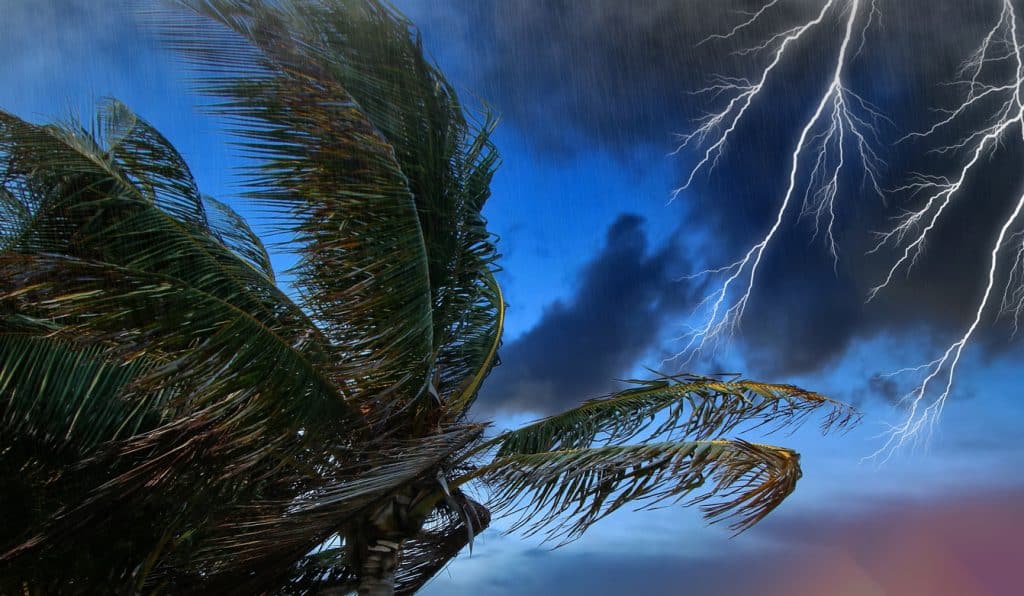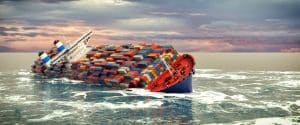
Hurricane Ernesto is just the most recent reminder of the risks of natural catastrophes to pharmaceutical supply chains – and they’re only going to grow. But technology may have the answer.
On balance, it was a lucky escape. Hurricane Ernesto was the fifth named storm and third hurricane of the 2024 Atlantic hurricane season, but in the end, it was only moderately strong – a category one (of five) hurricane.
After striking Puerto Rico as a tropical storm, it strengthened to a hurricane as it moved onto Bermuda. The latter, however, escaped major damage and loss of life. Forecasts that it would intensify to a category three hurricane, thankfully, remained unfulfilled.
Even so, it brought considerable disruption. Even in Puerto Rico, it knocked out power to more than half of homes and businesses, and a week later, 40,000 remained without electricity. In Bermuda, over 70% lost power. We should not get too comfortable though.
For a start, as this BBC piece makes clear, even category one hurricanes can bring severe damage. Ranked on windspeed, the scale makes little allowance for storm surges or rainfall that can bring widespread damage.
"Most damages are from water not wind," one expert told the reporter. Sandy, in 2012, among the costliest on record to hit the US, was also a category one hurricane.
Moreover, the Atlantic hurricane season, which runs to the end of November, is not halfway through, only reaching its peak in the first half of September. And, according to some, it’s only going to get worse. Meteorologists at commercial weather forecasting service AccuWeather predict a “Supercharged September” with a dramatic intensification of the season bringing a surge of hurricanes and tropical storms throughout the month.
“We could see a parade of storms,” its hurricane expert warned. With six to ten “tropical systems” predicted, it could rival the record-breaking year of 2020, when the region saw 10 storms in the month. There could even be multiple storms and hurricanes on the same day, the expert warned.
Overall, the weather service predicts we’ll see 20 to 25 named storms across the Atlantic basin by the end of the year – against a historical average of 14.
Nearshoring nightmares for pharma supplies
For the pharma industry, the threat of hurricanes in the region is not news. It has more interest than most in the fate of Puerto Rico, particularly.
Traditionally, the industry has accounted for over half of manufacturing on the island, about half of its exports and a quarter of its GDP. Attracted to the island by tax incentives in the 1960s and 1970s, the industry has been a fixture since. All the big names – and many others – are present, with 11 of the top 20 pharmaceutical companies present. Over half of the world’s top 10 bestselling prescription drugs are manufactured there.
The island’s attractions beyond the tax breaks are obvious: Offering cheap labour and relative proximity to the US, the unincorporated territory is a good location for nearshoring. The benefits of this have become ever more evident in recent years with logistics issues, the threats of trade war and other supply chain disruptions plaguing manufacturing centres further afield, such as China.
Unfortunately, the downsides have also been well and repeatedly illustrated. Even when the island gets off relatively lightly, as it seems to have with Ernesto, it’s just delaying a reckoning. In 2017, when Maria (a category four storm) hit, it “exposed the vulnerability of the island's pharmaceutical supply chains to the consequences of extreme weather risk”, as one academic puts it. It also coincided with the start of among the most severe influenza seasons on record.
“The impact of Hurricane Maria on the pharmaceutical supply chain led to serious negative consequences on the US health care system which lasted for several months,” the paper notes. Half of hospitals found themselves short of saline, for example.
Supply chain transparency pressures
While the risk is long-standing and well-recognised, two factors are now exacerbating it.
The first is an increased level of scrutiny and emphasis on resilience coming from governments. It’s perhaps ironic that nearshoring was one of the strategies pushed by the Department of Health and Human Services’ Essential Medicines Supply Chain and Manufacturing Resilience Assessment report in 2022 – emphasising the move towards government action to insist on greater supply chain resilience. In May, the Promoting Resilient Supply Chains Act of 2023 passed the House of Representatives by 390 to 19.
The second is climate change, which threatens more frequent and more severe extreme weather events, such as hurricanes, storms and cloud bursts. That has a number of consequences for pharma manufacturers – and they won’t be restricted to manufacturing in the Caribbean.
Most obviously, more extreme weather makes the risk of disruption that much greater, and means strategies to reduce vulnerabilities such as nearshoring must take this into account. Manufacturers, as ever, must consider the full range of risks and mitigations to ensure resilient supply chains.
Even before they may see that increased weather risk manifest, they face pressure on various fronts to address the rising risk of extreme weather.
Quite apart from new developments, regulation is already requiring large companies to large companies to evaluate their supply chains’ exposure to risks from extreme weather. In the UK, for instance, the Task Force on Climate-Related Financial Disclosures introduced the obligation for big businesses (and all from 2025) to report on this. Its requirements have now been incorporated in the International Sustainability Standards Board (ISSB) standards launched in June 2023.
Pharma and other businesses also face external pressure from other stakeholders to address the risks. That includes investors and, perhaps even more obviously, insurers – businesses even more exposed to the changing weather than pharma.
Secondary perils come to the fore
The insurance industry is not only suffering from rising losses from a long-term increase in the likes of floods and hurricanes (as well as earthquakes), which it has long been used to managing as a major risk. It is also increasingly concerned by rising losses from hailstorms, floods, droughts, and wildfires.
Traditionally, these events are smaller, causing fewer big losses and are, therefore, easier to manage for insurers. However, the increased frequency and sometimes severity of these events – so called “secondary perils” – has been rising up the agenda in recent years.
It’s already being felt: A report by rating agency AM Best in August suggested the hard (higher prices) reinsurance market was likely to persist longer than in previous market cycles in part because of losses from secondary perils.
“Every year since 2017 (except 2019) has generated insured losses in excess of US$100 billion. Despite no major hurricanes in 2023, natural catastrophe losses totalled an estimated US$108 billion,” the AM Best report noted. This, in turn, is likely to feed into the primary insurance market, where pharma businesses buy, resulting in higher premiums or more stringent conditions on them.
Fortunately, there are things businesses can do to limit any increases in premiums and make themselves a more attractive risk for insurers. One way to do that is to show insurers you understand the risk and help them to do so, too.
Unfortunately, in many cases, the technology and processes pharma businesses rely on to evaluate their risk doesn’t help. Many risk assessment tools suffer from inadequately specific mapping, so they can’t accurately account for the flooding that can cause significant damage with even low-category hurricanes, for example.
Moreover, when evaluating the level of risk, tools are often backwards looking: Forecasting the chance of extreme weather in a region by reference to historical incidents and losses. But the whole point of climate change is that the old rules don’t apply.
SCAIR®: Climate-ready value at risk calculations
SCAIR® addresses both these issues by using Location Risk Intelligence, reinsurer Munich Re technology for natural catastrophe risks. This provides detailed, location-specific mapping of weather risks so that businesses and their insurers can have confidence in a plant’s exposure to flooding and other risks. It also draws on Munich Re’s climate risk modelling experts’ predictions of how climate change will impact each location.
Integrating these insights within SCAIR® enables pharma businesses to develop value-at-risk calculations – that can inform decisions for today and the long term.
These technological tools provide businesses with visibly of their supply chain risk that they can use to make a compelling case to insurers – and help satisfy regulators as well.
Moreover, because SCAIR® focuses on the value at risk – the real potential impact on the business of any disruption – it can help direct investment in mitigation efforts to where they will be most effective in reducing financial exposures. It can even help pharma manufacturers respond more quickly if the worst does happen, limiting the disruption an incident causes.
To find out how our supply chain risk management software and consultancy can help you and your insurers manage the risks of a changing climate, get in touch today.

